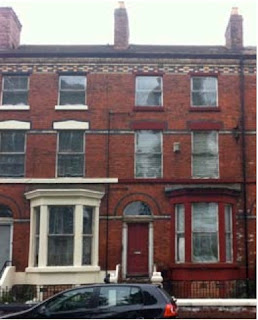Introduction:
Constructive Thinking (Architects)
became involveed in formulating proposals for the Welsh Streets via a
number of different circumstances and projects we have been involved in
over the last five years.
First
of all, we have just completed the renovation of two large terraced
houses on Botanic Rd in Kensington under the TSB retrofit for the future
programme. The details for this programme can be found online, but the
interesting parallel with this project is that we renovated one of the
houses to current UK building regulations standard, and the other to an
enhanced eco specification. Both of these renovations were from a bare
brick situation similar to those on this site, and were brought up to a
housing association lettable standard. So far as was practicable, all of
the suppliers, contractors and tradesmen were based in Liverpool or the
North West.
Secondly,
over the last few years, we have run university design programmes
(undergraduate) in both design and research based around the
regeneration of this part of the city. Not all of them have involved
retention, and not all of them have involved wholesale demolition, but
over the years, with our students we have explored a number of different
options , and from this have a deep understanding of the area along
with the challenges and aspirations of the stakeholders involved.
Finally
we have been living and working in the Liverpool area for over 20
years, and in that time have gained a wide understanding of the culture
of the city and its inhabitants. As such our aim was that this in
conjunction with our engagement with the community during the design
process would allow any proposals or ideas to feel very much of the
city.
Our Brief:
There
have been a number of different proposals for the Welsh Streets (by
others), most of them have ‘engaged’ with the public to a greater or
lesser extent, but none of the designers seem to have been given the
opportunity to look at retention and refurbishment in any meaningful
way. There also appears to have been only a cursory nod to the provision
of community amenities. The very real threat from demolition has eroded
trust and engendered fear within the community. We were asked to take a
look at the viability of retention, and remodeling where possible, and
to proposed some kind of amenity which could contribute to the
integration of any new residents into the already established community.
We were also asked to give some options for developer-led new build
within our proposals so as a direct cost comparison could be made. We
were to focus on the four streets from Kelvin Grove to Powis Street.
Principles set out within this study may be readily applied to a wider
site.
Constructive Thinking Studio Ltd. Liverpool Science Park, 131 Mount Pleasant, Liverpool, L3 5TF
t: (0151) 705 3433






















